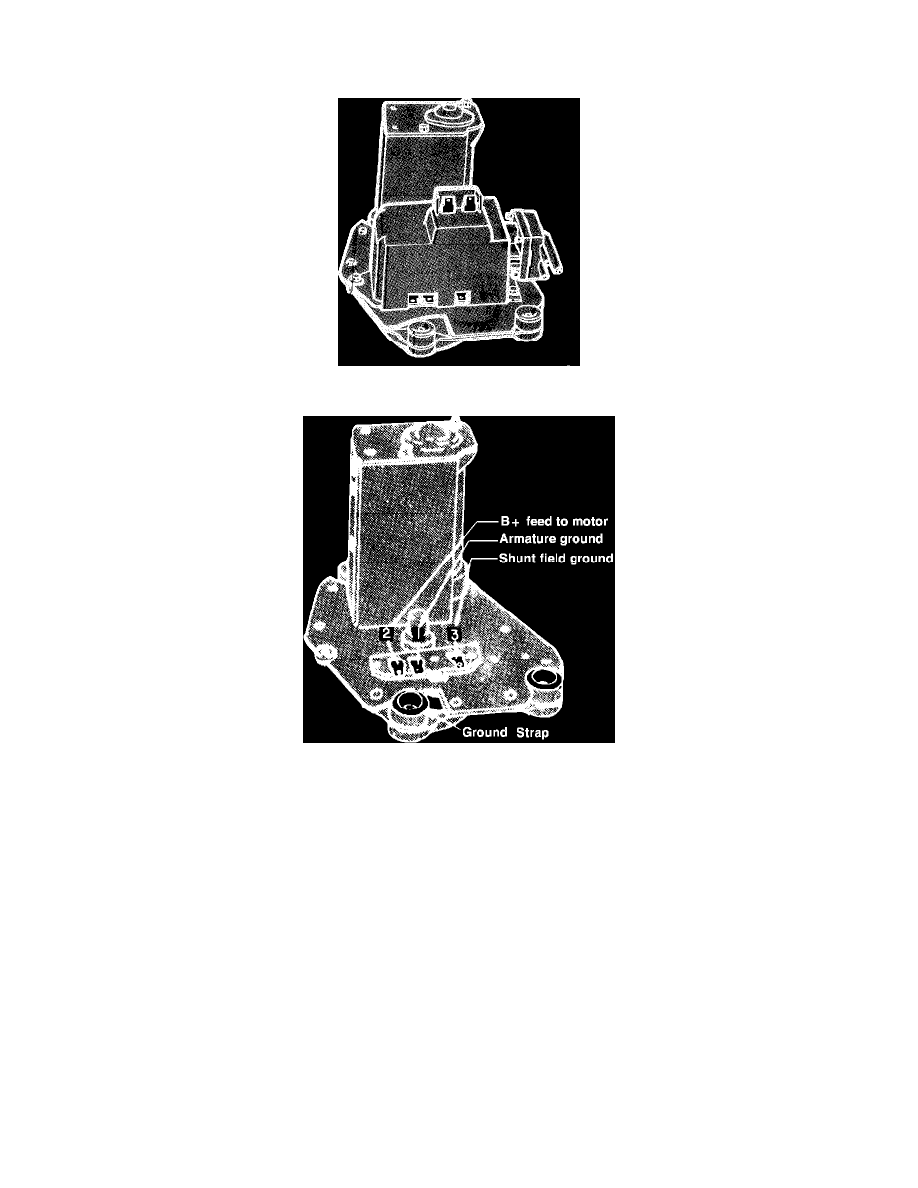Suburban 3/4 Ton 4WD V8-305 5.0L (1986)

Wiper Motor: Description and Operation
Rectangular Motor
Fig. 1 Rectangular windshield wiper motor. Shown w/washer pump installed
Fig. 2 Rectangular windshield wiper motor electrical connections
The rectangular motor, Fig. 1, consists of an armature, brush plate assembly, field coils and a housing which is attached to a gear housing. The motor
electrical connections, park switch, and on some models a washer pump are also mounted on the gearbox. A gear on the commutator end of the armature
drives an intermediate gear and pinion assembly, which in turn drives the output shaft. A crank arm on the output shaft operates wipers through a pivot
link (transmission) assembly.
When ignition is on, battery voltage is supplied to motor terminal 2, Fig. 2. Current flows through the series field to a splice where it is divided, and
part passes through the armature and part through the shunt field. The armature and shunt field circuits are completed to ground through the wiper switch
, with motor speeds determined by resistance in the shunt field ground path.
Standard (Non-Pulse) Wiper Operation
Placing wiper switch in low position, grounds motor terminals 1 and 3, Fig. 2, at the wiper switch. Shunt field current flows directly to ground through
terminal 3, armature current flows to ground through terminal 1 and the motor runs at low speed. Placing wiper switch in high position grounds terminal
1, but terminal 3 remains open. Armature current flows directly to ground through terminal 1, shunt field current flows to ground through a resistor
connected between terminals 1 and 3, and the motor runs at high speed due to the weakened shunt field.
When wiper switch is turned off, and wipers are not in park position, terminal 1 is grounded through the closed motor park switch contacts. Terminals
1 and 3 are connected through the wiper switch, and the motor runs at low speed. When wipers reach their lowest point of travel, a cam on the motor
output shaft opens the park switch, and the motor stops.
Pulse Wiper Operation
On models with pulse wipers, a pulse control module provides a delay wipe mode through the low speed circuit. When wiper control is in delay
position, battery voltage is supplied to a capacitor in the module through a variable resistor. When the capacitor is fully charged, it activates a switching
circuit which provides a ground to begin wiper operation. As the motor operates, park switch contacts close, the capacitor discharges, and the motor
